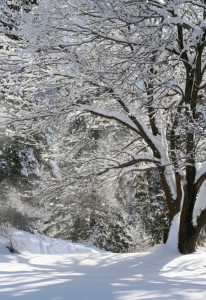
There are any number of holidays to celebrate in December. The Jews have Hanukkah. Christians remember the birth of Jesus on Christmas. Kwanzaa is a reminder of African traditions. Many non-religious individuals celebrate Saturnalia. All of these celebrations fall around the time of the winter solstice, the shortest day of the year. In 2015, this is said to occur on December 22. It’s thought that Christmas began as a way of celebrating “the true light of the World” instead of the Pagan rituals of Saturnalia. As you learn more about the winter solstice, you may see that some of today’s holiday traditions didn’t come from religion.
The Feast of Juul
With Marvel making “The Avengers” so popular, this celebration may be due for a comeback. The Feast of Juul is a Scandinavian celebration of 12 days at the winter solstice to honor Thor. Fires were lit, symbolic of the light and heat from the sun. The Yule log was a special log that was burned until just a piece remained. Families saved this piece for good luck until the following year, then it was used as kindling for the next Yule log. In France, peasants kept the ashes under the bed as protection against storms. Other European countries placed the ashes on their fields for fertilizer. The Christmas tree and wreath may be direct descendants from this celebration.
Saturnalia – A Seven-Day Festival in Ancient Rome
The traditions of Saturnalia are pieced together from different accounts. One historian referred to the celebration as a “carnival atmosphere.” The festival honored Saturn, a deity of agriculture and harvest. It is thought that slaves were served by their masters, or maybe even dined together. Servants had leave to be disrespectful without worrying about punishment. Schools and courts closed. Grudges were supposed to be forgotten during the festival, and wars were put on hold. In Saturnalia tradition, gifts were given, and in some cases, verses accompanied the gift giving. This may have led the way to the modern Christmas card.
Over time, Saturnalia turned into a week-long festival where everyone behaved unrestrained. Gambling was permitted, even though it was normally frowned upon. Slaves were able to play dice games along with their masters. Sobriety was the exception. Most people overate and stayed drunk throughout the week.
Yaldā – The Longest Night of the Year
Just as the winter solstice is the shortest day of the year, it’s also the longest night. Iranians celebrate this night with a festival known as Yaldā. Family and friends come together in a meal, and they read poetry. The pomegranate and watermelon are significant because of their red color, which symbolizes the hues of the morning. Here, too, masters and servants would reverse roles. Fires would be burned all night, and acts of charity were performed to ensure the sun would gain victory over the darkness.
Santo Tomas – A Guatemalan Festival
Although St. Thomas’ Day is a Christian celebration in recognition of the apostle Thomas, in Guatemala, the day has been revived to honor the Mayan Indians. The flying pole dance is performed by three men on top of a 50-foot pole. Two of the men wind a rope around one of their feet and jump, while the other man beats a drum. Landing on their feet pleases the sun god, which makes the days get longer. This celebration was banned in the 16th century but was reestablished in the 1950s.
Celebrate Winter by Making Your Own Traditions
Winter is a time of celebration to combat the depression that comes with shorter days and less light. Make memories with your family by taking traditions from ancient celebrations and enjoy the winter solstice. It’s the turning point for longer days and more light, which means spring is right around the corner.

